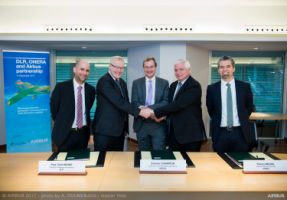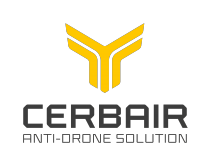A partnership for next-generation computational fluid dynamics

Computational fluid dynamics, or CFD, uses applied mathematics, physics and computational software to help design aerodynamically efficient aircraft. A new partnership with DLR and ONERA – German and French aerospace research centres, respectively – will help keep Airbus at the forefront of this field.
CFD modelling is a computer-based method of accurately predicting the flow of fluids such as gases and liquids in motion; for an aircraft engineer, it’s vitally important to know precisely how air will pass over and interact with every part of an airplane. Creating high quality modelling with computational fluid dynamics requires substantial time, computational power and expense. The partnership with Germany’s DLR and France’s ONERA is helping to address these challenges and improve the accuracy of CFD models.
While aircraft manufacturers and research centres have developed their own proprietary CFD software over the years, “We thought we could go faster and achieve more if we collaborated,” said Klaus Becker, an Airbus flight physics senior manager in Bremen, Germany specialising in aerodynamic strategies. “This partnership plays an important role in securing our long-term development projects,” he said, predicting that it would produce benefits across Airbus’ diverse line of products.
Partnering for a better result
Airbus had previously partnered with DLR and ONERA – both individually and together – but this new partnership is larger in scope and presented different challenges than past efforts. Michael Augello, a flight physics manager in Toulouse, France said, “Each partner has different cultures and operating methods and while this was a challenge for the framing of the project, this diversity will be an asset to create the best CFD code ever.”
Executives at both DLR and ONERA expressed excitement about the new partnership. Rolf Henke, Executive Board Member for Aeronautics Research of DLR said he was proud that his company’s “experience designing CFD software for air- and spacecraft applications will be an essential ingredient of this cooperation.” Thierry Michal, General Technical Director of ONERA, characterized the partnership as “an ambitious project to develop state-of-the-art simulation software,” calling it an opportunity to strengthen cooperation with Airbus.
The project team expects to be able to model situations not covered by existing computational fluid dynamics software. “We’ll be able to simulate the aerodynamics for much more complex manoeuvres and do it accurately,” said Airbus’ Augello. “And with the capabilities that will be introduced over the coming years, we will be able to exploit a much larger design space than before.”





